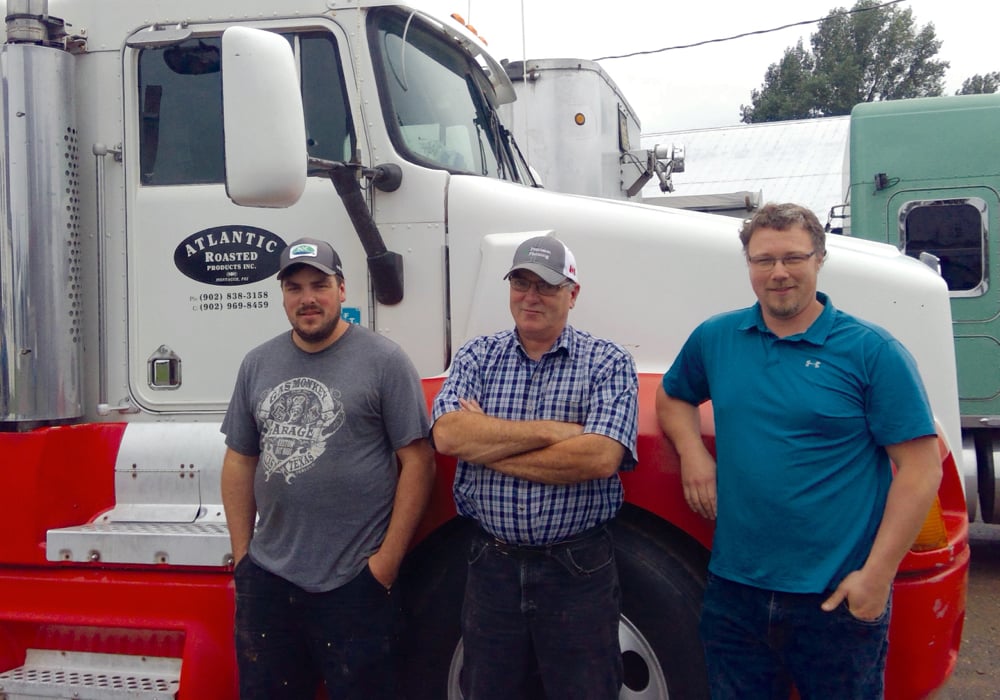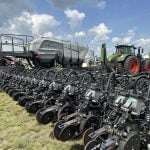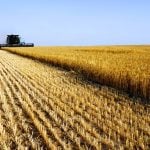For decades, on-farm diversification has been talked about, ruminated on, spit at and swallowed whole. We’ve seen underdogs become successes, and we’ve also seen outrageous failures, even when they had big government backing.
At the same time, economies of scale have propelled non-diversified farms to unbelievable sizes, backed by the five-year bull market in grains.
It all leaves Michael Gertler looking back on his work about diversification with some hard questions. “For decades, specialization and scale has driven agriculture,” says the retired sociology professor from the University of Saskatchewan. “This is economies of size, using the same amount of labour for a lot more output.”
Read Also

Why do farmers hate paying taxes?
It didn’t take long in my accounting career to learn that farmers don’t like paying income tax. No one does…
In the race to get bigger, Gertler says, we’ve forgotten economies of scope, which are synergies created between enterprises on farms.
Partly it’s because agronomic technology (fertilizer, GPS, large equipment, breeding stock, seed, etc.) and crop insurance have taken the place of diversification as a risk management tool.
It can also be partly because our farm community has become so diversified. In the last decade, while commodity farms have been sizing up, there’s also an influx of very diversified farms, with everything from organic production and direct-marketed ethnic produce to value-added operations of every different kind. Along our rural roads, there are also unprecedented differences in farming styles and farm sizes.
Today, Gertler sees rich-man and poor-man diversification. A “poor man’s” approach means small steps of adding value to try to increase the value of core production. These projects are flexible, don’t require huge capital and carry less risk. By getting into it gradually, farmers can experiment and test to see if it meets their economic and financial rationality.
On the other end of the scale, farmers with established, strong capital bases are typically looking for good investments of all sorts, including off-farm investments like rental units. On-farm, they tend to get into larger projects since they can afford to invest more money, time and expertise to start new businesses. They may even hire management for the existing enterprise while the owner takes the time to develop the next one, says Bev Connell, from Proagri Consulting and co-author of the Ontario ag ministry’s Exploring Value Added Opportunities.
For example, Connell has worked closely with a large farm in Nova Scotia which now boasts not only a large beef cow-calf operation and a feedlot, but also a business that exports strawberry plants and perennial flowers, plus another that produces fresh fruit and plant cuttings, with each of those enterprises large enough to be a stand-alone business. It’s diversification of a different order than adding a row of beets to sell at a farmers’ market.
Over the 20 years Connell has been working with farmers and other businesses (lately he’s been working in the lumber and mining industries), he has noticed two distinct attitudes that drive diversification.
First is the business entrepreneur who wants to create and develop new businesses, and continue to grow and expand. Those individuals can be large or small farmers; it’s more about their culture and personality than the sizes of their businesses.
The other group includes those who diversify to try to create more value from what they’ve traditionally done. They want to keep farming, but need to generate additional revenue to stay in business. For them, diversification is more of a necessity than a desire.
Anecdotally, Connell has noticed ventures fail more often if the farm needs to bring in more money rather than if the farmers have an interest in developing another enterprise. Typically more money can be made by first being better at their base enterprise before they divert their attention and resources to a new enterprise. “When farms have tried to start a new enterprise and taken their eye off the ball, it has typically resulted in a failure of the new enterprise as well as damage to the existing one,” says Connell.
The success rates for farm diversification efforts are probably not much different than for any small business venture. The majority fails in the first five years, and many don’t make it past the first year. Based on the survival rate of other business ventures, Connell estimates only one in five are successful, with success defined as contributing positively to the financial health of the farm.
However, sometimes the objectives of the enterprise may not be all about money. Maybe the farmers are only looking to feel good about what they are doing as citizens of the world, or it could be part of the succession process. “Many diversification projects break even or occupy time and provide purpose, but do not contribute financially,” says Connell.
It’s important to understand why you want to diversify. “People give it meaning,” agrees Gertler. “What’s valuable to you?”
A survey of farmers in Sweden found they wanted to diversify to reduce risk, to use idle resources and develop a business for social and lifestyle reasons. In a Saskatchewan survey, farmers often diversified to use available management and labour and to provide full-time, year-round employment for key hired personnel. For example, by diversifying into fabrication, processing, transportation or livestock a farmer could retain and make economical use of a full-time employee or other family members. The Saskatchewan farmers tended to reduce exposure to market and production risks with off-farm income, or through non-agricultural enterprises.
However, Connell says that while access to big chunks of capital can help you grow and capture economies of scale, at some point diseconomies creep in. The enterprise starts to lose efficiency because it’s too large for the management capability.
The Internet has also dramatically changed how we market. Diversification used to focus mainly on local markets since many farms didn’t have the resources to market regionally, nationally or internationally. Now everyone can reach potential customers worldwide, so marketing “local” means marketing a local product to the world. Moreover, people will pay for an experience and a story and not just buy food that tastes good and fills their belly.
Many successful ventures are also driven by either children or spouse. Gertler says many modern farm women want to manage an enterprise by themselves, leveraging their skills and experience and contributing to family income, instead of just helping behind the scenes. Connell has seen farming parents form a new business venture with the non-farm children, using some of the farm’s resources to help get the new enterprise started. They plan to transfer the new venture to the non-farm children once viable.
Connell also knows a case where the senior generation transferred the base farm to their children and then started a new enterprise as their semi-retirement project to keep them busy. The retiring generation is typically financially established and can put the time and patience into developing something new. Risk becomes less of a factor because they’re not necessarily relying on it for a living, so they are willing and able to experiment and be creative.
Whatever the motive, it should match risk tolerance, and this needs to be talked about with everyone involved. Share up front how much money you want to make, how much you’ll need to start and operate, and exactly how you’re going to get funding.
Lack of patience and cash flow can crash startups. When University of Kentucky researchers studied 120 value-added dairy processors across the U.S., they found only about a third had reached positive cash flow one to three years after launch. For six per cent, it took five to 10 years.
That first year can be very tough sledding. Of the nine per cent of the respondents who had been involved in on-farm processing for less than a year, only 12.5 per cent had positive cash flow. This type of value-added enterprise is not a quick solution to profitability issues for a dairy, concluded the researchers.
Although we read and hear about current success stories, often they have been working towards diversification for many years before becoming successful. With today’s instant communication networks it seems like it happened overnight, but it likely took a long time.
Plan ahead and share your idea with others to validate your assumptions, says Connell. Some people think that if they share, someone will steal their ideas, or they’re afraid to hear critical comments about their plan. However, more of that type of critical thinking and discussion is needed to develop ideas and make stronger business. “Many people get married to their idea and start to convince themselves it’s fail-proof when it may not appeal to many others,” says Connell.
Farmers by nature are risk takers, so simply taking an off-farm job may not provide the incentive they need to feel successful, says Connell. Although sometimes it’s the right thing to do and will bring in the necessary revenue to keep the farm going, it’s typically not what makes a farmer excited to get out of bed in the morning. “It’s the creation, development and independence that motivates them to continue,” says Connell. “It’s not always just about money.”
Connell knows first hand how an entrepreneurial heart beats under flannel. He has created and sold several businesses ranging from a beef enterprise to a farm market, Christmas wreath export business and blueberry-packing enterprise. One thing he has learned over the years is that a farm diversification is no different than any other business created by an entrepreneur: Many fail, and not always for lack of planning. Some fail due to timing. Others because consumers’ tastes change before a business reaches maturity where it can afford to change.
Entrepreneurs with the ability to regroup, learn, persevere and stay positive attract like-minded individuals, creating a positive culture and that eventually leads to success. “Every failure just identifies a way not to do it,” Connell says. “It doesn’t mean it cannot be done.”















